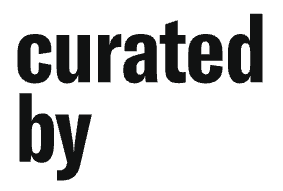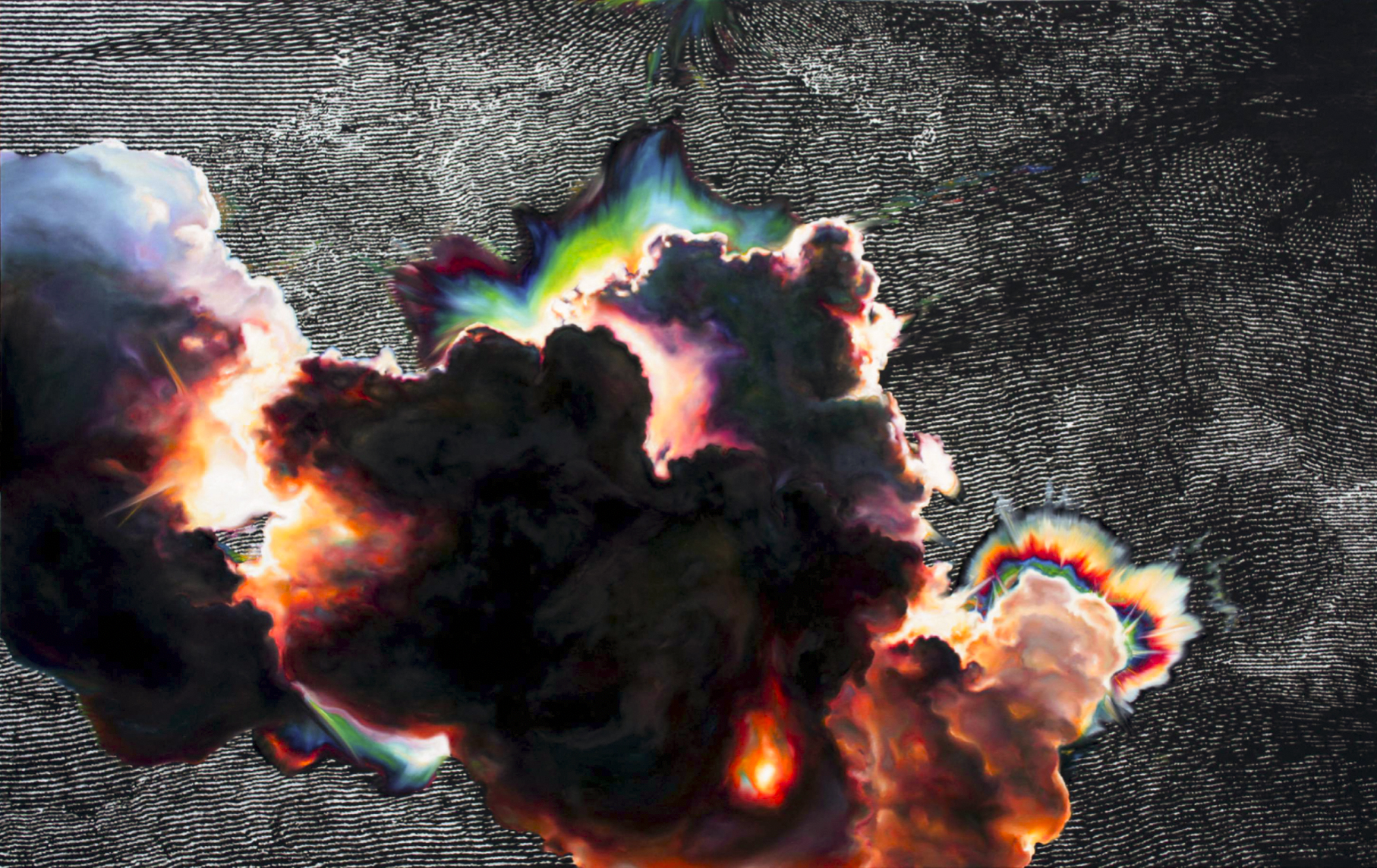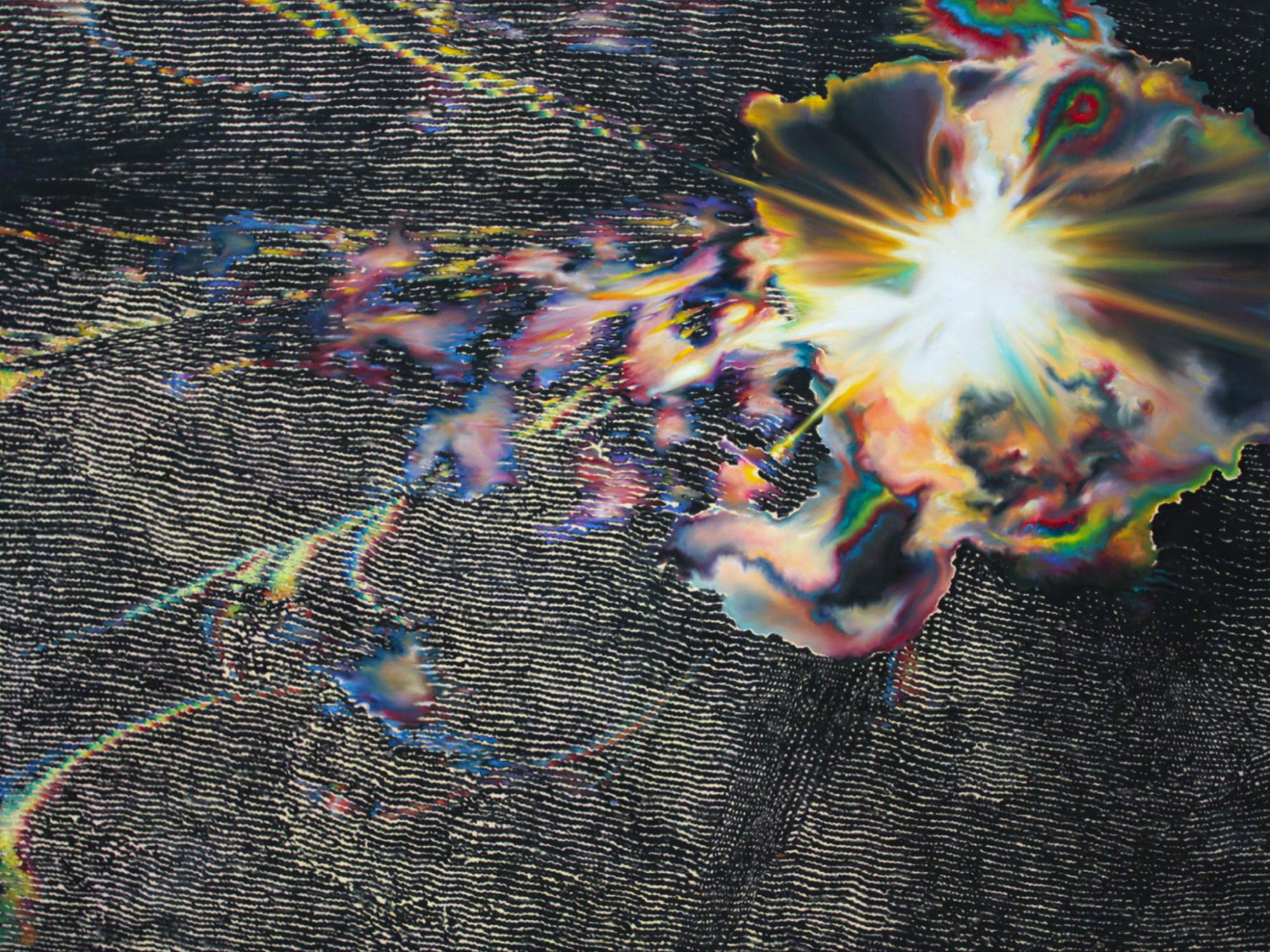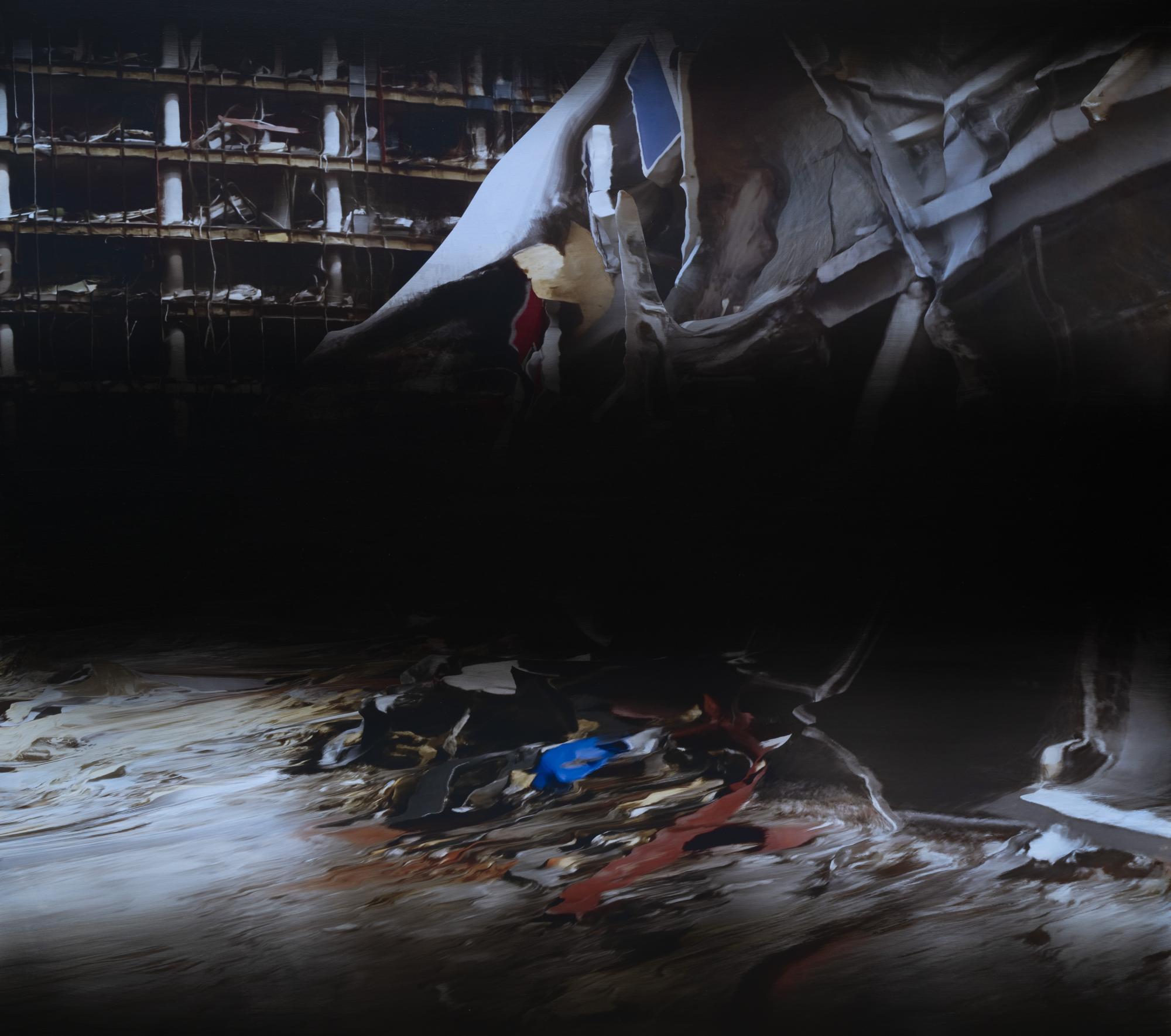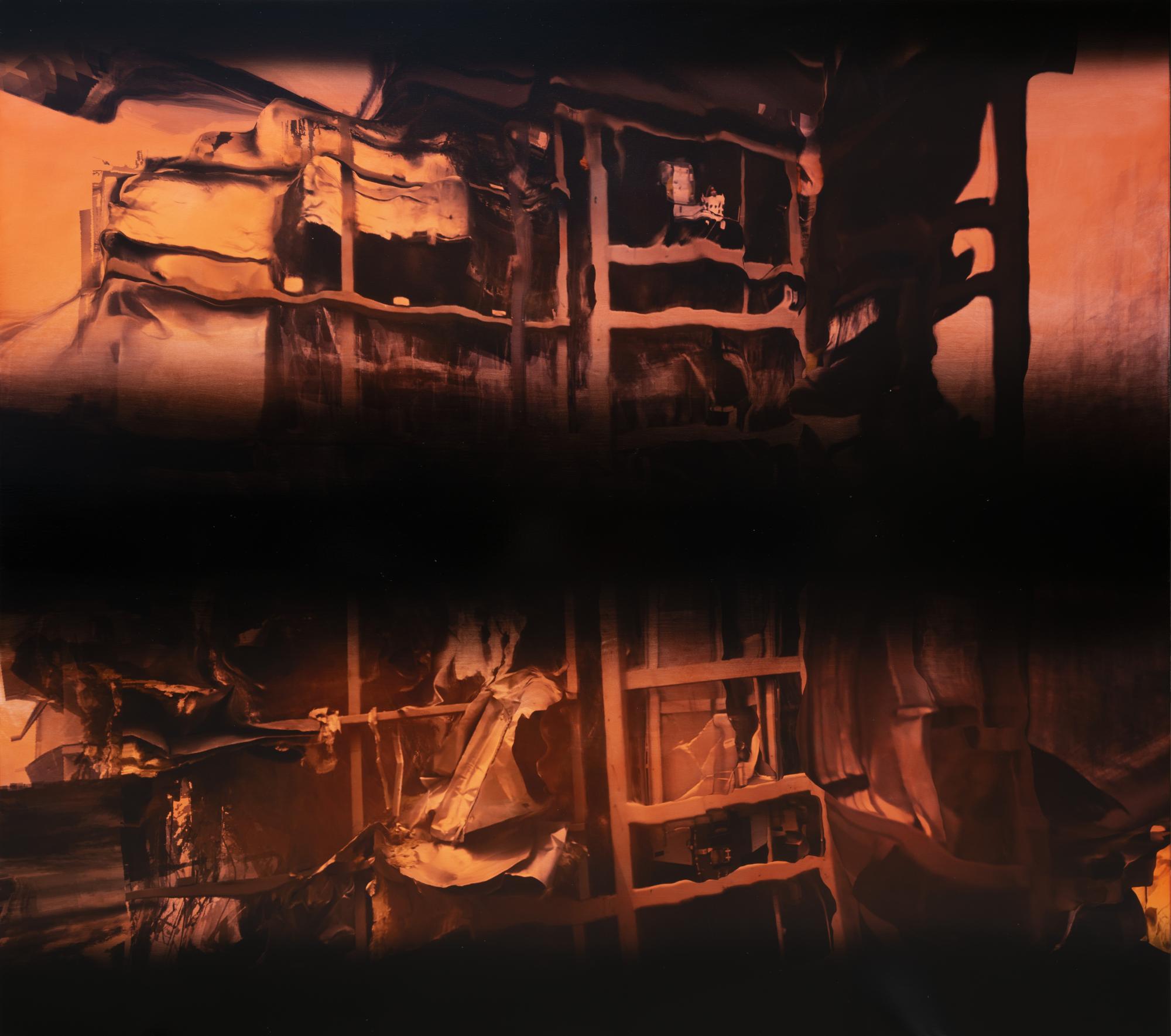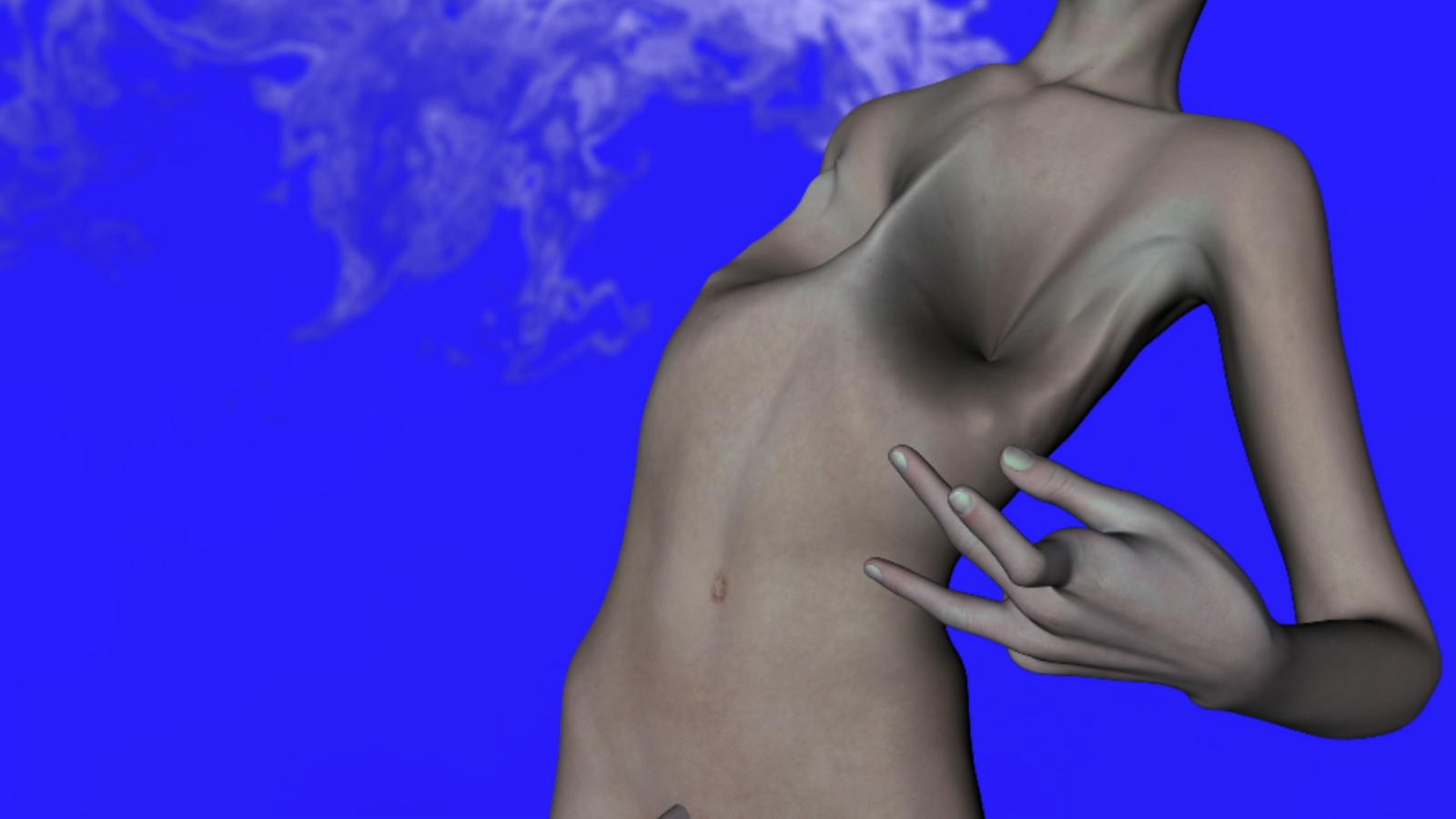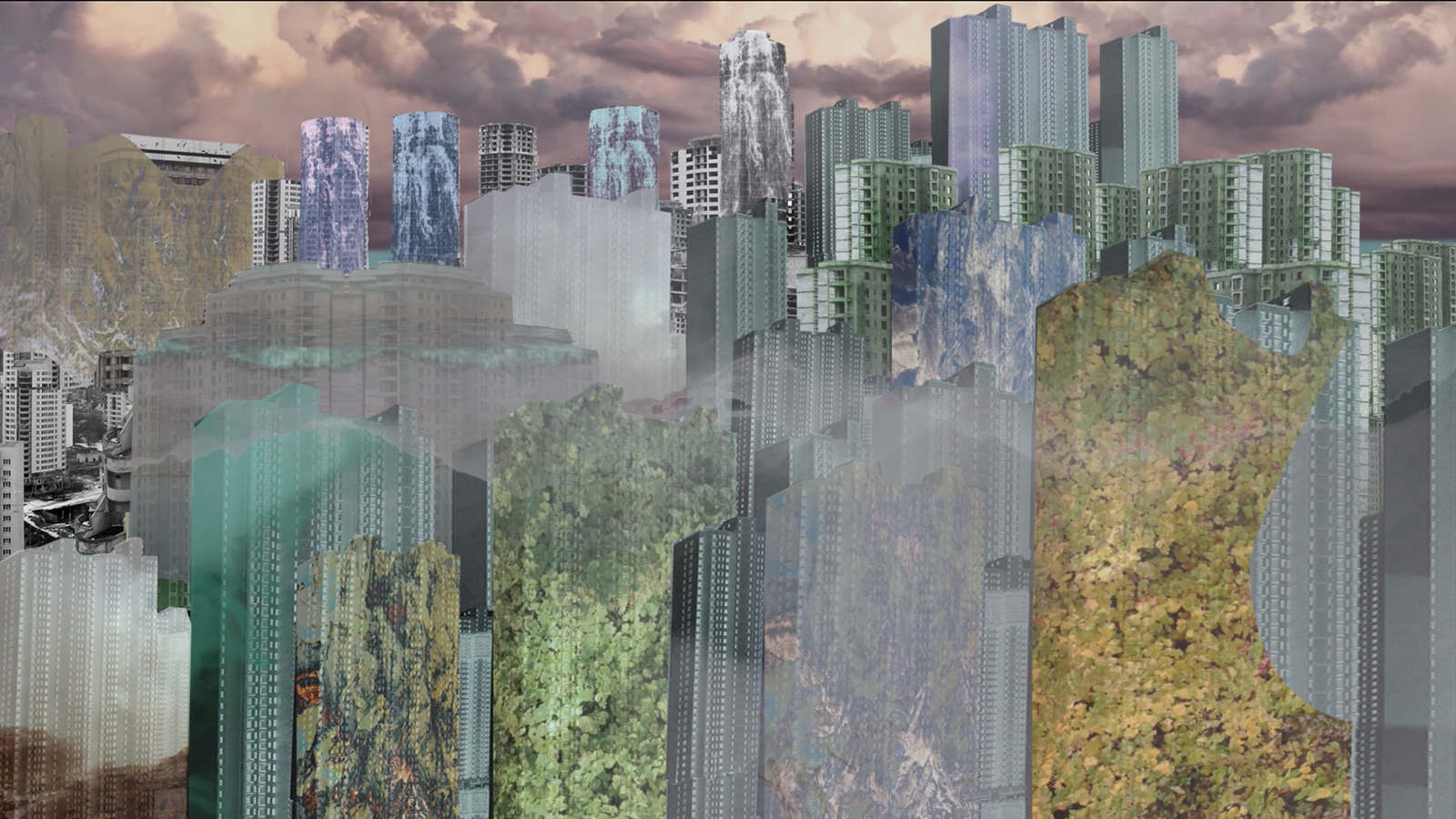Crone Wien curated by Eva Kraus & Volo Bevza
„2022“

www.galeriecrone.com
Curator(s):

Eva Kraus is a German art historian and museum director. She has been the director of the Bundeskunsthalle Bonn since 2020. From 2014 to 2020, she directed the Neues Museum für Kunst und Design in Nuremberg. In Vienna, she built up the Austrian Friedrich und Lillian Kiesler-Privatstiftung, of which she was director from 1998 to 2003.
Volo Bevza lives in Berlin and works as a visual artist, lecturer and curator. Bevza's work deals with the omnipresence of the internet, focusing on the question of the role of painting in the post-digital age. Bevza spent the first 60 days of the Russian war of aggression in Ukraine. Among other things, he volunteered to help build anti-tank barriers, collect donations from Germany and also create more media presence.
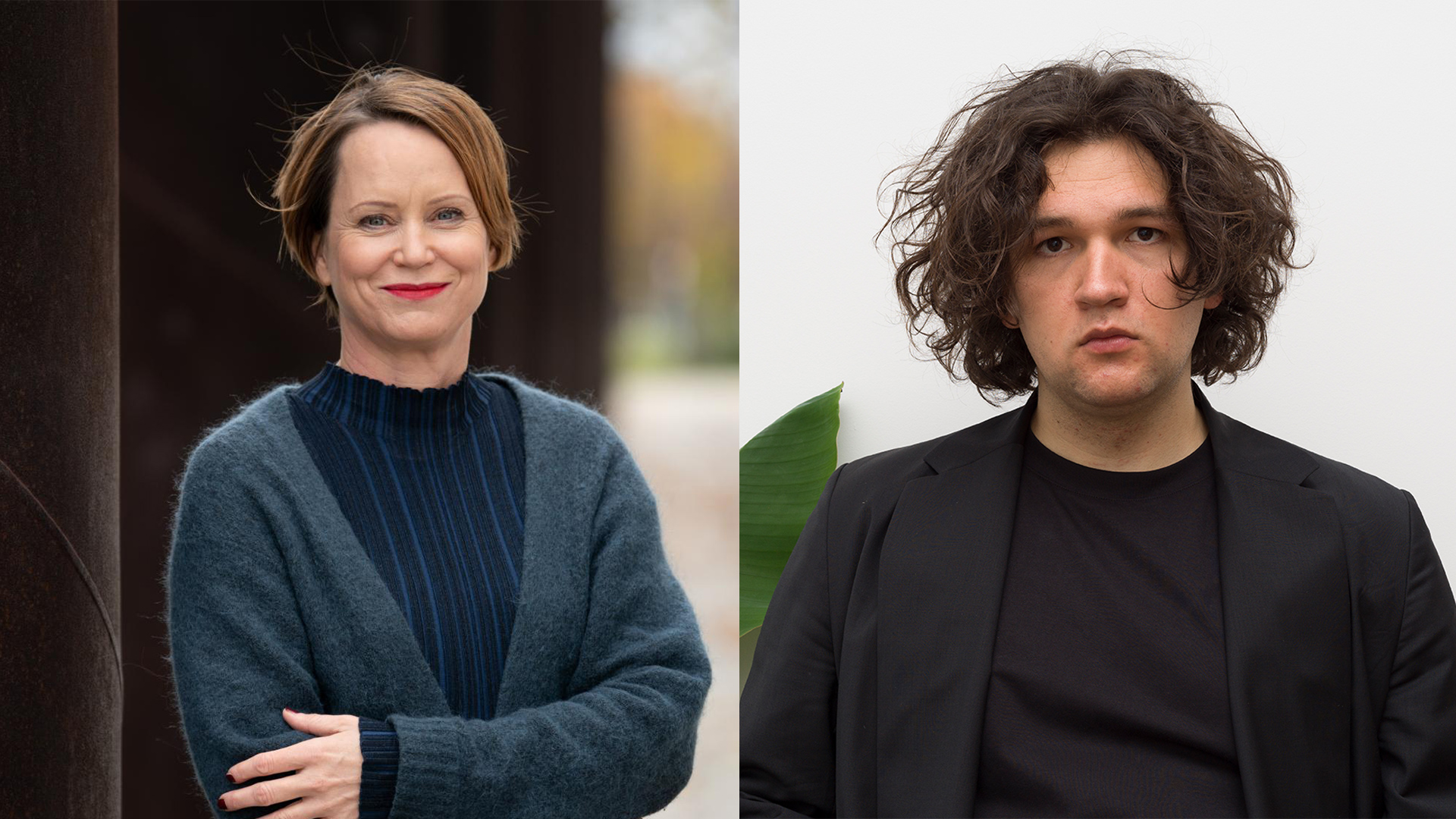
Artist(s):
- Artem Volokitin
- Victoria Pidust
- Volo Bevza
- Dariia Kuzmych
- Yevgenia Belorusets
Exhibition text
More
Since the escalation of the Russian war of aggression on Ukraine at the beginning of this year our reality has shifted, but this was preceded by the ideological conflict between the “Eastern dictatorship and Western democracy,” the coronavirus pandemic, migration flows, fake news, and the storming of the US capitol (and with it the emblematic tottering of democracy), as well as other shocks that we have followed in the media.
The collective witnessing through simultaneous media coverage makes our reality more unreal, the drama more absurd, than could have been imagined—because it is all playing out live in front of our “digital” eyes. A physical war in 21st-century Europe seems outmoded, almost grotesque on the screen, the propagandistic information war, one might think, completely outdated—yet that appears to be the means of the time.
The various information and misinformation overlap. “As soon as you turn on your cell phone, news comes in and expands your daily reality into hyperreality,” says Volo Bevza, artist and co-curator of the exhibition. “On the ground, you can feel the war, but most importantly, it is ‘experienced’ digitally. This hybridity of our perception brings with it the idea of a flexible, adaptable, multiform, and cross-platform image that merges with software and digital media—just as information about war does.”
This overlaying and blending of information and images is the subject of the exhibition 2022 as part of Curated by. Only Ukrainian artists were deliberately selected, for whom the clash between real war and the hybrid-virtual perception of war may feel particularly bizarre and disturbing. This raises the question of how such drastic experiences are reflected upon and how the reporting changes artistic scrutiny. Through and with the impressions of the current situation, the multimedia exhibition serves to make individual voices visible. Anticipatory works from previous years and updated works are shown in equal measure. Analog and digital means blur, especially in painting and photography. This is indirectly a testimony to the experiential shift in perspectives through the hybrid perception of a hyperreality that takes shape in a very painful and analog way.
In Victoria Pidust’s works, generated image worlds overlap with analog photography. For this purpose, she uses photogrammetry software and highly magnified snapshots from her iPhone. During the war, in April 2022 in Kiev, she scanned a shattered screen of a shopping mall destroyed by war damage to render “natural” looking landscape images, which she in turn decontextualized with building components from a Berlin construction site. Zoomed-in on and isolated details can be decoded as danger spots and signal alertness. With the associative mixture of hybrid visual material, she demonstrates the readiness of our perception to be manipulated.
The works of Yevgenia Belorusets, on the other hand, seem documentary at first glance. Her war diaries from the spring of 2022 have become famous through their daily broadcast in Spiegel online. Already in the work Please don‘t take my picture! Or they‘ll shoot me tomorrow from 2015, the artist addressed media deception by adapting Today’s Paper, a fictional journal, and dealt with the dichotomy of “private-public” and “personal-general.” In her current engagement, she confronts the issue of reception and enlightenment in private life as well as in the public sphere through artistic and also literary means. She subjects everything to a “reality check”, her simultaneous questioning creates new, concurrent realities.
Artem Volokitin translates the anxieties of the digital image into traditional oil paintings—an alliance of believable materiality and flawed artificiality of spectacle. In an almost medieval painting technique, destructive moments are transformed into ecstatic states. In imposing tableaux, beauty and approaching nightmare meet in grand gestures.
In Happiness 100%, Dariia Kuzmych explores the vulnerability of the human body through a digital avatar in the form of a female model. One experiences how the changes, transformations, and metamorphoses of the body that are impossible in a physical world can be represented virtually in a very believable and painful way—and in doing so, the digital space with its own laws and possibilities expands our basic conceptions. Digital “body extensions” do not completely replace the analog medium in
Kuzmych‘s work; recently created delicate watercolors decipher real injuries.
In his painterly-digital approach, Volo Bevza repeatedly deals with destruction: physical destruction overlaps in his work with the translation losses of a digital software, which in turn is transferred alienated into the medium of painting. Here, realities intermingle; superimpositions and the filter of the “soft image” temper dystopian situations, while painterly structures overlay documentary appropriation. His paintings are exaggerated, charged places of a frightening, existing reality.
Deutsche Übersetzung
Nicht erst seit der Eskalation des russischen Angriffskriegs auf die Ukraine Anfang dieses Jahres hat sich unsere Realität verschoben. Voran gingen der ideologische Konflikt zwischen den Systemen „Ost-Diktatur / West-Demokratie“, die pandemische Krise, Migrationsströme, Fake News und die Erstürmung des Kapitols (und damit das sinnbildliche Wanken der Demokratie) wie auch weitere Erschütterungen, die wir medial verfolgt haben.
Die kollektive Zeugenschaft durch die zeitgleiche Medienberichterstattung macht unsere Wirklichkeit irrealer, das Drama absurder, als es vorweg hätte vorstellbar werden können – denn es spielt sich alles live vor unserem digitalen Auge ab. Ein physischer Krieg im 21. Jahrhundert in Europa erscheint unzeitgemäß, auf dem Screen beinahe grotesk, der propagandistische Informationskrieg, könnte man meinen, vollkommen überholt – jedoch das Mittel der Zeit.
Die multiplen Informationen und Falschinformationen überlagern sich. „Kaum schaltet man das Handy ein, kommen Nachrichten rein und erweitern die tagtägliche Realität zu einer Hyperrealität“, sagt Volo Bevza, Künstler und Ko-Kurator der Ausstellung. „Vor Ort kann man den Krieg spüren, aber vor allem wird er digital ‚erlebt’. Diese Hybridität unserer Wahrnehmung bringt mit sich die Idee eines flexiblen, adaptierbaren, vielgestaltigen und plattformübergreifenden Bildes, das mit Software und digitalen Medien verschmilzt – genauso wie die Informationen über den Krieg es tun.“
Mit dieser Überlagerung und Überblendung von Informationen und Bildern beschäftigt sich die Ausstellung „2022“ im Rahmen des Curated-by-Galerienfestivals. Bewusst wurden nur ukrainische Künstler.innen ausgewählt, für die sich das Aufeinandertreffen von realem Krieg und hybrid-virtueller Kriegswahrnehmung besonders bizarr und verstörend anfühlen mag. Dabei stellt sich die Frage, wie solch einschneidende Erlebnisse reflektiert werden und wie die Berichterstattung eine künstlerische Auseinandersetzung verändern. Durch und mit den Eindrücken der aktuellen Lage dient die multimediale Ausstellung der Sichtbarmachung einzelner Stimmen. Es werden antizipierende Arbeiten aus vorangegangenen Jahren und aktualisierte Werke gleichermaßen gezeigt. Es verschwimmen analoge und digitale Mittel, insbesondere in der Malerei und Fotografie. Dies ist indirekt ein Zeugnis der erlebbaren Verschiebung der Perspektiven durch die hybride Wahrnehmung einer Hyperrealität, die sehr schmerzlich und analog Gestalt annimmt.
In den Arbeiten von Victoria Pidust überlagern sich generierte Bildwelten mit analoger Fotografie. Dazu verwendet sie Fotogrammetrie-Software und stark vergrößerte Snapshots aus ihrem iPhone. Während des Krieges, im April 2022 in Kiew, hat sie einen zerschmetterten Bildschirm aus einer durch Kriegsschäden zerstörten Shopping-Mall gescannt, um daraus ‚natürlich‘ wirkende Landschaftsbilder zu rendern und diese wiederum mit Bauteilen einer Berliner Baustelle zu dekontextualisieren. Gezoomte, isolierte Details lassen sich als Gefahrenherd decodieren und signalisieren Alarmbereitschaft. Mit der assoziativen Mischung aus hybridem, visuellem Material führt sie die Manipulationsbereitschaft unserer Wahrnehmung vor.
Die Arbeiten von Yevgenia Belorusets hingegen wirken auf den ersten Blick dokumentarisch. Ihre Kriegstagebücher aus dem Frühjahr 2022 sind durch die tagesaktuelle Übertragung in Spiegel Online berühmt geworden. Schon in der Arbeit „Please don‘t take my picture! Or they‘ll shoot me tomorrow“ aus dem Jahre 2015 adressierte die Künstlerin mediale Täuschung durch die Adaption von Today’s Paper, einem fiktiven Journal, und setzte sich mit der Dichotomie von ‚privat-öffentlich‘ und ‚persönlich-generell‘ auseinander. In ihrer aktuellen Beschäftigung stellt sie sich dem Thema der Rezeption und Aufklärung im privaten Leben wie in der Öffentlichkeit mit künstlerischen und auch literarischen Mitteln. Alles unterzieht sie einem „Reality Check“, ihre zeitgleiche Hinterfragung schafft neue, simultane Realitäten.
Artem Volokitin übersetzt die Ängste vor dem digitalen Bild in traditionelle Ölmalereien – eine Allianz aus glaubhafter Materialität und fehlerhafter Künstlichkeit des Spektakels. In fast mittelalterlicher Maltechnik werden destruktive Momente in ekstatische Zustände überführt. Auf imposanten Tableaus begegnen sich in großer Geste Schönheit und nahender Alptraum.
In „Happiness 100%“ erforscht Dariia Kuzmych die Verletzlichkeit des menschlichen Körpers anhand eines digitalen Avatars in Gestalt eines weiblichen Modells. Man erlebt, wie die in einer physischen Welt unmöglichen Veränderungen, Verwandlungen und Metamorphosen des Körpers virtuell sehr glaubhaft und schmerzhaft dargestellt werden können – und hierbei der digitale Raum mit seinen eigenen Gesetzen und Möglichkeiten unsere Basis-Vorstellungen erweitert. Digitale ‚Körperextensionen‘ ersetzen das analoge Medium bei Kuzmych nicht vollends, jüngst entstandene delikate Aquarelle dechiffrieren reale Verletzungen.
Volo Bevza beschäftigt sich in seiner malerisch-digitalen Vorgehensweise immer wieder mit der Zerstörung: Physische Vernichtung überblendet sich bei ihm mit den Übersetzungsverlusten einer digitalen Software, die wiederum verfremdet in das Medium Malerei überführt wird. Hier vermischen sich die Realitäten; Überblendungen und der Filter des ‚Softimage‘ zeichnen dystopische Situationen weich. Malerische Strukturen überlagern die dokumentarische Aneignung. Seine Bilder sind überhöhte, aufgeladene Orte der erschreckenden, real existierenden Wirklichkeit.

